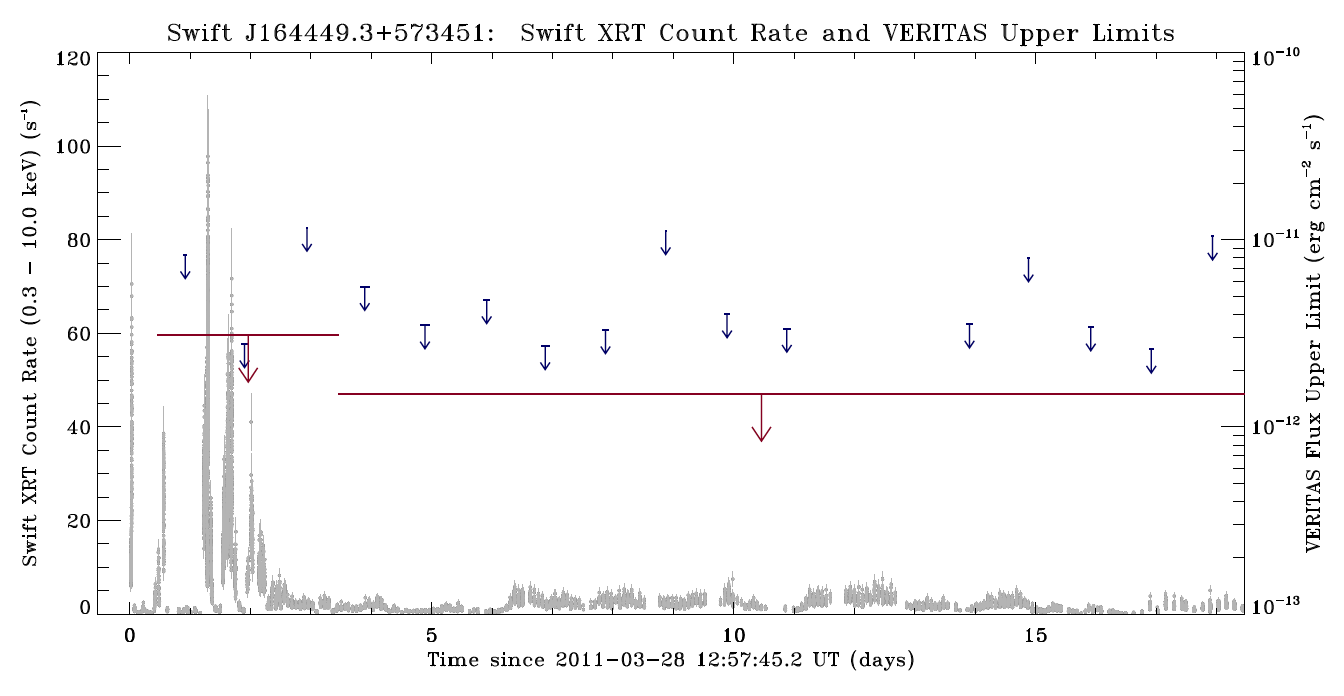
XRT light curve (Evans et al. 2007). For more details see Figure 1 below.
Reference: E. Aliu et al. (The VERITAS Collaboration), Astrophysical Journal 738: L30, 2011
Full text version
ArXiv: ArXiV:1107.1738
Contacts: Daniel Gall
Swift J164449.3+573451(Sw J1644+57) was first detected by the Swift Burst Alert Telescope (BAT) on 2011 March 28 at 12:57:45 UT. The Swift spacecraft slewed to the location of the source and began observations with the X-ray Telescope and the UV/Optical Telescope. These observations located an extremely bright and variable uncatalogued X-ray source. Less than one hour later, the BAT triggered a second time on Sw J1644+57, which ruled out a gamma ray burst origin and gave the first sign of the unusual nature of the source. This prompted multiwavelength follow-up observations at a number of observatories (EVLA, Gemini, Hubble, Chandra...).
We report on very-high-energy (E>100 GeV) gamma-ray observations of Sw J1644+57. A total exposure of 28 hours was obtained on Sw J1644+57 with VERITAS during 2011 March 28 - April 15. We do not detect the source and place a differential upper limit on the emission at 500 GeV during these observations of 1.4x1012 erg cm-2 s-1 (99% confidence level). We also present time-resolved upper limits and use a flux limit averaged over the X-ray flaring period to constrain various emission scenarios that can accommodate both the radio-through-X-ray emission detected from the source and the lack of detection by VERITAS.
Figures from paper (click to get full size image):


